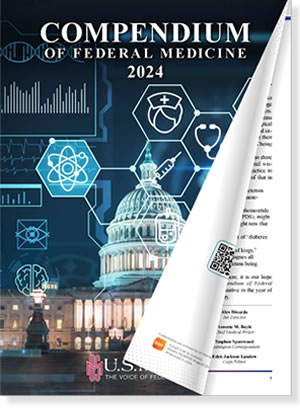Enhanced Prevention
“Enhanced prevention strategies that target healthcare- and community-associated [C. difficile infection] may further reduce the overall infection rate. Improving outpatient antibiotic use can also help reduce antibiotic-associated adverse events like CDI and improve patient safety,” the CDC noted.
Background information in the article recounted that the incidence of Clostridioides difficile (formerly Clostridium difficile) infection and associated hospitalizations increased in the 2000s primarily because of the emergence of the epidemic strain ribotype 027.
In addition, the authors suggested, introduction of more-sensitive C. difficile assays in the late 2000s, such as NAATs likely contributed to the rising incidence of C. difficile infection.
In fact, they pointed to increasing concerns about the potential overdiagnosis of C. difficile infection by NAAT, since this test detects the gene encoding the toxin instead of the actual toxin.
“Although in the United States there is currently no consensus on the best laboratory test for C. difficile infection, whether an institution or laboratory has prespecified criteria for C. difficile testing can help guide the choice of testing method,” according to the researchers. “The higher sensitivity of NAATs as compared with other assays should be taken into account when estimating the burden of and trends in C. difficile infection.”
The report also warned that, while C. difficile infection originally was associated with hospitals and other healthcare institutions, it is increasingly identified in the community among people with no recent hospitalizations or stays in a long-term care facility. That infection rate showed no change, even when the decline in healthcare-associated infections decreased annually by an adjusted 6%. Researchers cautioned, however, that the survey did not account for increased NAAT use, which could have masked a true reduction in C. difficile infection.
In an effort to monitor the changing epidemiology of C. difficile infection and generate national estimates of disease burden, CDC has been conducting population-based surveillance of C. difficile infection in 10 U.S. sites since 2011. That data was used to estimate 453,000 episodes of C. difficile infection (95% confidence interval [CI], 397,100 to 508,500) occurred in the United States in 2011. Researchers noted that the number was based on a 2011 rate of NAAT use of 52%, which has since been updated to 55%.
“The decrease in health care-associated C. difficile infection probably reflects a decline in both cases with an onset associated with a long-term care facility and hospital-onset cases,” the authors wrote. “We previously observed a 55% decrease in the adjusted incidence of C. difficile infection with an onset associated with a long-term care facility across EIP sites from 2011 through 2015.
The CDC National Healthcare Safety Network reported that the C. difficile standardized infection ratio, which is a risk-adjusted measure of hospital-onset C. difficile infection, declined by 20% from 2015 through 2017. The network credited several factors, including a decline in ribotype 027, which might be partly driven by reduced fluoroquinolone use in U.S. hospitals.
“The association between fluoroquinolones and C. difficile infection is well described, and in one study, hospitals that achieved a 30% reduction in fluoroquinolone use observed a 19% reduction in hospital-onset C. difficile infection,” according to the report, which also cited adherence to recommended infection-prevention practices and greater emphasis on diagnostic stewardship to counter the effects of the increased sensitivity of NAAT by reducing inappropriate testing.
- Guh AY, Mu Y, Winston LG, et al. Trends in U.S. Burden of Clostridioides difficile Infection and Outcomes. N Engl J Med. 2020;382(14):1320–1330. doi:10.1056/NEJMoa1910215

